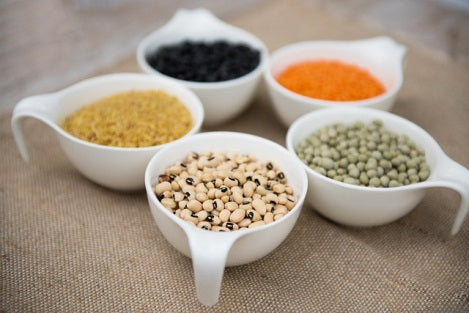Ever wondered why these days everyone is just talking about Millets? Is it really super food?
Millets are the ancient staple grains which was consumed in many parts of India is making a comeback in our kitchen. When you observe they were the grains which our ancestors were consuming. We have become very millet aware in the last few years and suddenly these bland, gluten-free whole grains found their place back on our kitchen shelves.
What are Millets though?
Millets are called “Poor man’s grain” due to their affordability. Millets are small, round-shaped coarse grains which is an indigenous crop to India that comes with an impressive nutrient profile.
Most commonly found Millets-

|
Millet Name |
Calories |
Protein (gm) |
Fat (gm) |
Carb (gm) |
Fiber (gm) |
GI Index |
|
Barnyard |
326 |
6.2 |
2.2 |
75.3 |
9.8 |
42.3 |
|
Foxtail |
336 |
8.92 |
2.55 |
72.58 |
6.39 |
54.5 |
|
Pearl |
362 |
10.94 |
5.43 |
73.29 |
11.49 |
56.6 |
|
Sorghum |
346 |
9.97 |
1.73 |
77.9 |
10.22 |
61.2 |
|
Finger |
335 |
7.16 |
1.92 |
77.99 |
11.18 |
61.1 |
|
Little millet |
353 |
10.13 |
3.89 |
73.28 |
7.72 |
64.2 |
Guess what? They are not bland in taste anymore. Our nutritionists and chefs create healthy and tasty recipes from them. Millets are now being made into fluffy bread, gooey porridges, hot khichadi, Idlis, dosas and even delicious desserts and many more
Let's now see top 5 benefits of Millets
1. High Fiber Content
One of the known standout features of millets is their exceptional fiber content. As we all know, fiber plays a crucial role for maintaining digestive health, regulating blood sugar levels, and promoting satiety, which aids in weight management. Millets, such as pearl millet and sorghum, are particularly rich in dietary fiber, making them an excellent choice.
2. Gluten free Food-
Wheat, a staple grain in India contains gluten, which can't be tolerated for individuals with celiac disease. Millets are gluten free grains and hence are an excellent choice for the ones who have gluten sensitivity or intolerance. It can also be a choice of grain for people seeking weight loss.

3. Powerhouse of Nutrients –
along with high fiber millets are also packed with essential nutrients. These grains are rich in vitamins and minerals, including magnesium, phosphorus, and iron, which has a vital role to play in normal body functioning. By incorporating millets into your diet, you can effortlessly boost your nutrient intake and support optimal bodily function.
4. Regularize Blood Sugars-
Consuming millets regularly is a rising trend these days for people with Diabetes. Millets when combined with Prolicious Up It! – protein and fiber enhancer will help to lower the sugar spikes as compared to regular millet rotis. Millets when combined with protein and fiber helps to reduce the post-meal sugars in people with diabetes
5. Versatility and Culinary Delight:
Another compelling reason to embrace millets is their versatility in the kitchen. From savory dishes like mathri and stir-fries to sweet treats like puddings and porridges, millets lend themselves well to a myriad of culinary creations. With a subtle, nutty flavor profile, millets can easily adapt to various cooking styles and flavor combinations, making them a delightful addition to any meal plan.
Conclusion
The comeback of millets in the modern diet is no coincidence – these ancient grains offer a multitude of health benefits, from their high fiber content to their impressive nutrient profile and culinary versatility. Whether you're looking to improve your digestive health, boost your protein intake, or make more sustainable food choices for weight management millets have something to offer everyone. So, why not elevate your diet and embrace the goodness of millets today? Your body and the planet will thank you for it.



